CoE 197U Scaling
Contents
Moore's Law
In 1965, Gordon Moore published a 4-page paper entitled "Cramming more components onto integrated circuits"[1], where he predicted that the number of components in an integrated circuit will increase by a factor of two every year, as shown in Fig. 1. Note that he based his extrapolation on just 4 data points!
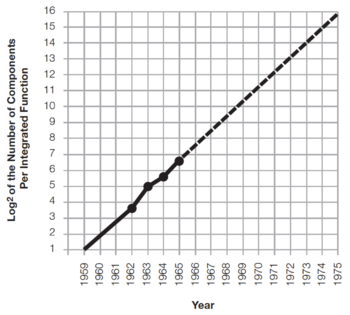 Figure 1: Gordon Moore's 1965 prediction[1]. |
[[File:Gordon moore video.jpg|thumb|350px|link=https://www.youtube.com/watch?v=ylgk3HEyZ_g%7CGordon Moore: Thoughts on the 50th Anniversary of Moore’s Law |
Why is this paper and the graph in Fig. 1 important? Gordon Moore's prediction, also known as Moore's Law, has reflected and, more importantly, driven the steady and rapid progress in computing technology[2]. Thus, satisfying Moore's Law has become the goal instead of being merely a prediction.
Evolution of Complexity
As Gordon Moore predicted, the cost and performance advantage of putting more and more devices into a single integrated circuit (IC) led to the rapid increase in circuit complexity. One convenient indicator of circuit complexity is the number of transistors contained in a single IC, reaching the 1-billion transistor level in 2010, and achieving almost 50 billion transistors in 2020, as shown in Fig. 2.
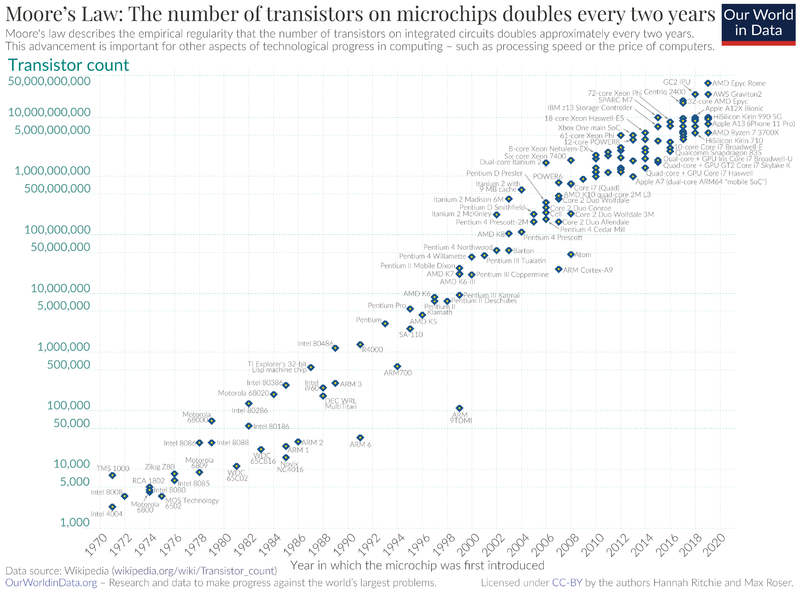 Figure 2: Transistor Count (1970 - 2020)[3]. |
For more than 30 years, the development of integrated circuits continued roughly on the trajectory predicted by Moore's Law. This steady advance has relied heavily on the advances in device and fabrication technologies. Device dimensions are gone down by a factor of approximately 0.7 every generation, giving us approximately a 50% reduction in device area every 2 years, as seen in Fig. 3.
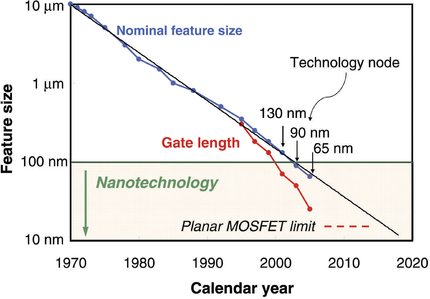 Figure 3: Technology node and transistor gate length versus calendar year[4]. |
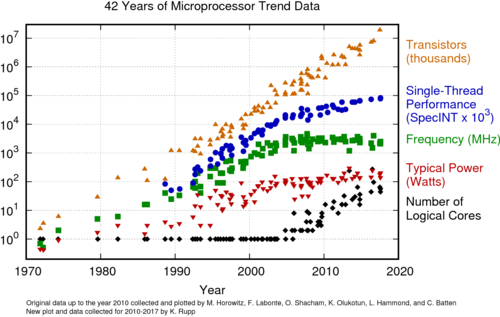 Figure 4: Scaling and processor performance[5]. |
However, in the past decade, we have seen a slowdown in the pace of development and performance of integrated circuits, seen in Fig. 6, as we face various physical limits. As device sizes approach atomic-scales, the characteristics of the devices themselves have started to limit the performance of digital circuits, leading to larger leakage currents and variability. Further reducing the device dimensions requires a more precise manufacturing process with more stringent requirements, significantly increasing the fabrication costs.
Challenges in Digital Design
As the speed of digital circuits increase at lower geometries, power dissipation becomes a significant problem. This is due to the fact that the average power dissipated by a digital gate is proportional to the frequency of operation and the square of the supply voltage. Aside from the large power densities present in the chip, it becomes increasingly difficult to remove the heat being generated.
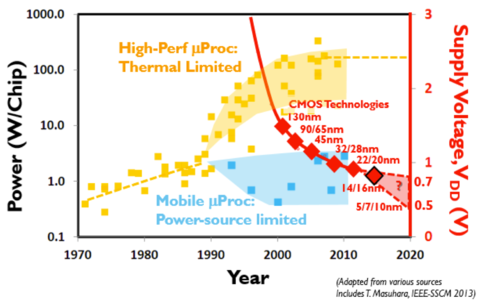 Figure 5: Supply voltage and power scaling[6]. |
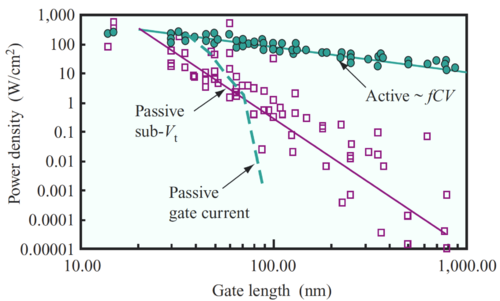 Figure 6: Active and Leakage Power[7]. |
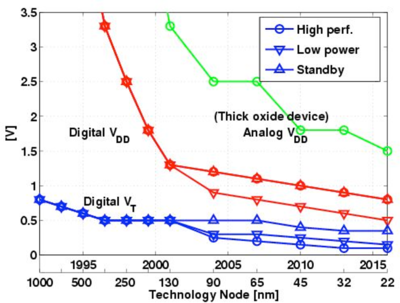 Figure 7: Supply and threshold voltage scaling[8]. |
 Figure 8: Leakage and frequency variations[9]. |
Why Scale?
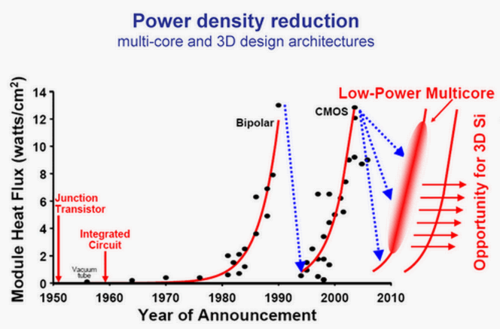 Figure 9: Semiconductor power density[10]. |
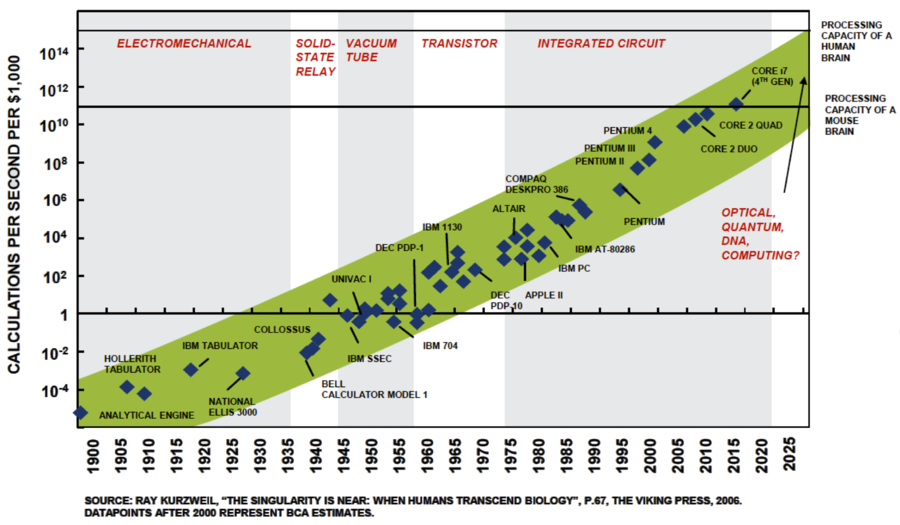 Figure 10: Calculations per second for a fixed cost[11]. |
The Cost of Integrated Circuits
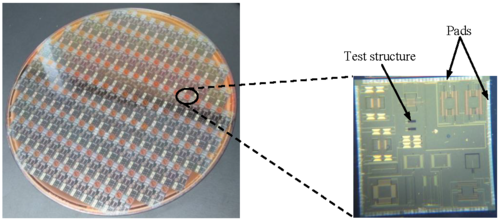
Cost is the main motivation for reducing device sizes. Aside from the marked improvement in speed, more transistors can be integrated in the same die or wafer, and this results in the significant reduction in the cost per transistor. The total cost of producing an integrated circuit can be broken down into two components: (1) the fixed or non-recurrent engineering costs (NRE), and (2) the variable or recurrent costs.
- Non-Recurrent Engineering (NRE) Costs
-
- NRE costs are overhead costs independent of volume, i.e. the number of integrated circuits made or sold.
- Examples of NRE costs include design time and manpower, CAD tools and equipment, mask generation costs, etc.
- Recurrent Costs
-
- Costs that are proportional to the volume of ICs produced.
- This includes the fabrication costs, packaging costs, and testing costs.
- In most cases, these costs are proportional the chip area.
Thus, the cost of an integrated circuit can be expressed as:
-
(1)
-
Where the components of the variable cost are:
-
(2)
-
Die Cost
The cost of a die or chip is dependent on the (1) cost of a wafer, shown in Fig. 11, (2) the number of chips or dies in a wafer, and (3) the die yield:
-
(3)
-
Note that increasing the number of dies in a wafer can reduce the cost per die. This can be done by increasing the size of the wafer, as long as the increase in cost due to the larger wafer size is offset by the reduction in overall cost due to more dies in a wafer, as seen in Fig. 12. However, increasing the wafer size can cause structural problems such as warping of the wafer, leading to increased device variability. One way to solve this problem is to increase the thickness of the wafer, as shown in Fig. 13.
 Figure 12: The evolution of wafer size[13]. |
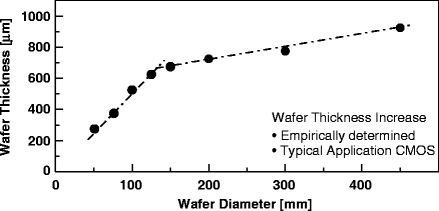 Figure 13: Wafer thickness[13]. |
Yield
The yield, , is defined as the ratio of good dies in a wafer relative to the total number of dies in a wafer, or equivalently in percent units:
-
(4)
-
We can estimate the total number of dies, each with area , in a wafer with diameter, as:
-
(5)
-
The first term in Eq. 5 gives us the total wafer area divided by the die area. However, as seen in Fig. 14, there are partial dies at the edge of the wafer that must be discounted since they cannot be used. The number of partial dies at the edge is estimated by the second term in Eq. 5. Note that by reducing the die area, the yield can significantly increase for the same wafer defect pattern, as shown in Fig. 15. Thus, for large die sizes, the die cost is higher since the yield is lower, thus the cost of the good dies must shoulder the cost of the bad dies.
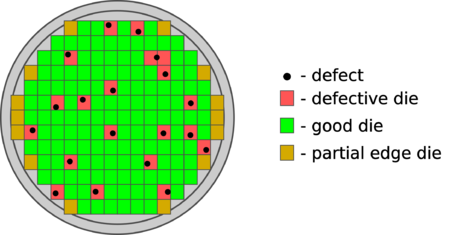 Figure 14: Wafer defects due to fabrication non-idealities[14]. |
 Figure 15: The effect of die size on yield[15]. |
References
- ↑ Jump up to: 1.0 1.1 Gordon E Moore, Cramming more components onto integrated circuits, Electronics, Volume 38, Number 8, April 19, 1965 (pdf)
- ↑ Gordon Moore: The Man Whose Name Means Progress, IEEE Spectrum, March 2015.
- ↑ Wikimedia
- ↑ S. E. Thompson, S. Parthasarathy, Moore's law: the future of Si microelectronics, Materials Today, Volume 9, Issue 6, 2006, Pages 20-25. (link)
- ↑ K. Rupp, 42 Years of Microprocessor Trend Data, link
- ↑ B. Kunert, Integration and Application of Epitaxial Systems: III/V on Silicon for Optoelectronics, IMEC Belgium 2015 (link)
- ↑ W. Haensch et al., Silicon CMOS devices beyond scaling, IBM Journal of Research and Development, vol. 50, no. 4.5, pp. 339-361, July 2006, doi: 10.1147/rd.504.0339.
- ↑ ITRS, The International Technology Roadmap for Semiconductors (2004 edition), 2004. Technical Report, http://public.itrs.net
- ↑ S. Borkar, T. Karnik, S. Narendra, J. Tschanz, A. Keshavarzi and V. De, Parameter variations and impact on circuits and microarchitecture, Proceedings 2003. Design Automation Conference (IEEE Cat. No.03CH37451), Anaheim, CA, USA, 2003, pp. 338-342, doi: 10.1145/775832.775920.
- ↑ Chen (IBM), ISS Europe 2007, (link).
- ↑ BCA Research (link).
- ↑ J. Dennis, CMOS Compatible Bulk Micromachining, IntechOpen 2013 (link)
- ↑ Jump up to: 13.0 13.1 P. Stallhofer, Why Are Silicon Wafers as Thick as They Are? In: Burghartz J. (eds) Ultra-thin Chip Technology and Applications, Springer 2011, New York, NY. (link)
- ↑ WikiChip (link)
- ↑ K. Choi's lecture notes on Design Metrics, CMPEN 411: VLSI Digital Circuits, Pennsylvania State University, Fall 2016 (link)







